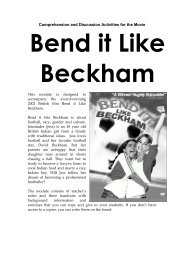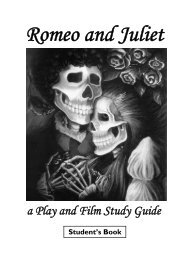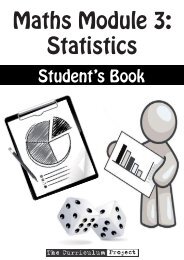Download - The Curriculum Project
Download - The Curriculum Project
Download - The Curriculum Project
Create successful ePaper yourself
Turn your PDF publications into a flip-book with our unique Google optimized e-Paper software.
8. Thinking about Learning: Grammar (1)This optional section looks at grammar: how students feel about grammar, and the differences in thegrammar of different languages.8.1 How important is grammar?A. Pre-teach logical (sensible, natural, following rules), exception. <strong>The</strong>se four people have differentfeelings about English grammar. Read what they think. Clarify anything students don’t understand.B. In groups, students discuss each view. Do students feel the same as any of these people? How do theyfeel? Each student thinks of a short sentence to describe their feelings about grammar.One member from each group summarises the group’s opinions to the class.8.2 Comparing grammarA. Students read the information in the bubbles.B. Give students a few minutes to think about similarities and differences between the grammar of theirlanguage(s) and English. <strong>The</strong>n put them in pairs or groups to share ideas. <strong>The</strong>n have a brief classdiscussion. If they are struggling, tell them to think about the following:• alphabets: the same or different? How many letters?• tenses: similar to or very different from English tenses?• word order• parts of speech• grammatical forms that are in L1, but not English• grammatical forms that are in English, but not L1Elicit specific examples, as in the bubbles, e.g.We don’t have articles in Burmese, so ‘I ate a potato’, ‘I ate the potato’ and ‘I ate potato’ aretranslated the same.C. Individually, then in pairs/groups, then as a class, students compare their first language with otherlanguages that they know.NOTE:• Burmese and Arakanese are very similar.• Thai, Shan and Lao are very similar to each other but are very different from Burmese.• Mon and Khmer (Cambodian) are very similar to each other but are very different fromBurmese, though the scripts are closely related.• Karen, Karenni and Pa-O are very similar to each other but are very different from Burmese,although the Karen and Pa-O scripts, and some vocabulary, are similar.• English is similar to many European languages (this is one reason many Europeans can speakEnglish well, even when it is not their first language) but it is very different from languagesnative to Burma.54 Module 11



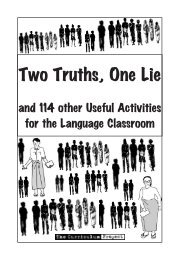




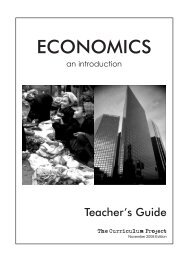
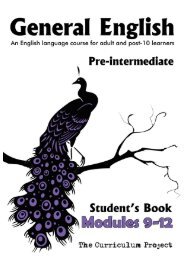


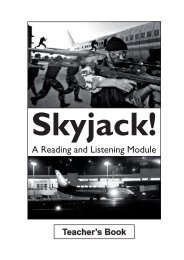
![[Eng] Nov 2012 DRAFT - The Curriculum Project](https://img.yumpu.com/45590859/1/184x260/eng-nov-2012-draft-the-curriculum-project.jpg?quality=85)
